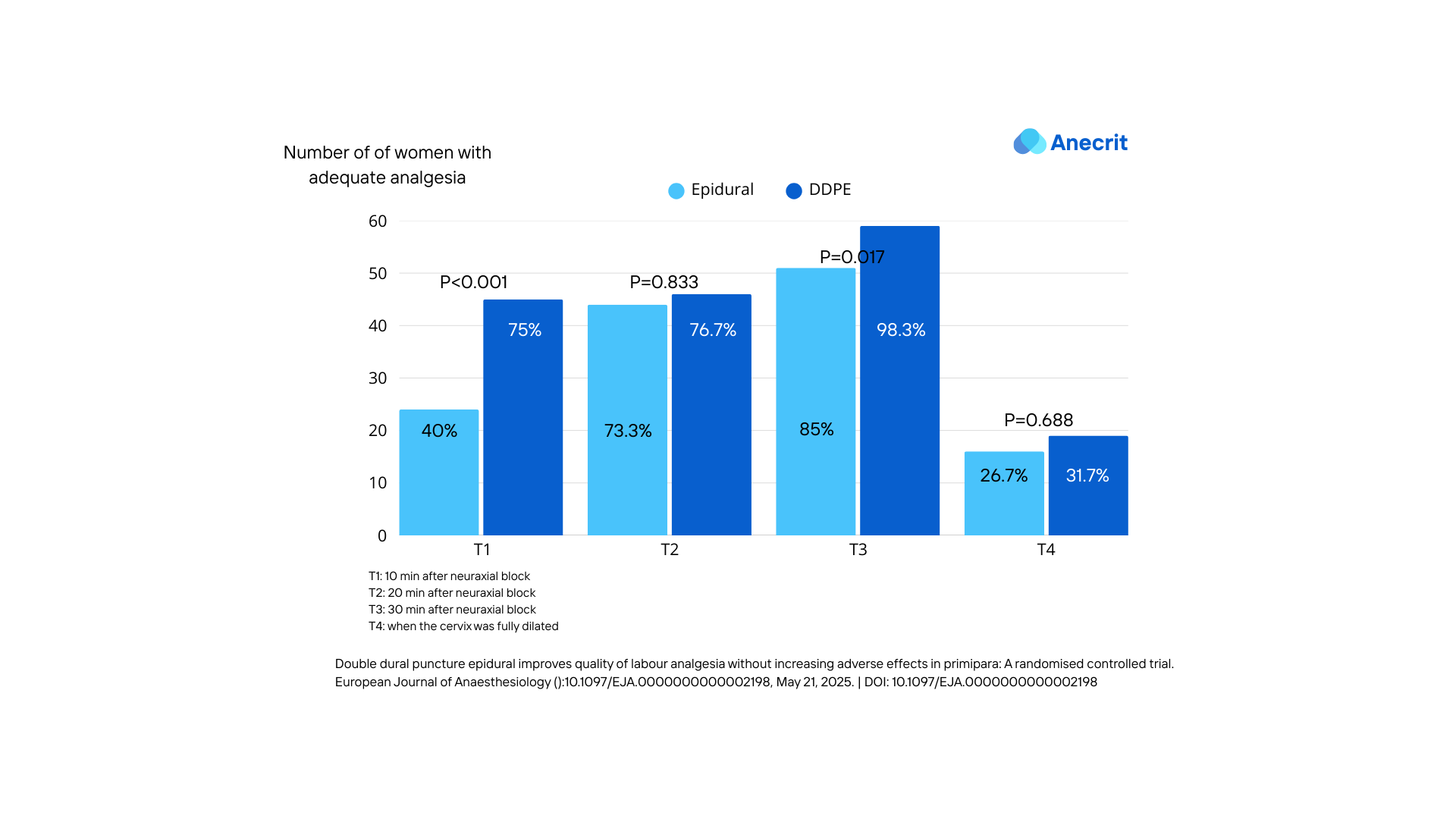New insights into optimizing labor analgesia!

For labor analgesia, anesthesiologists have multiple options. One technique often discussed is the Dural Puncture Epidural (DPE). This involves intentionally puncturing the dura mater with a spinal needle to facilitate the diffusion of the epidurally administered medication mixture into the subarachnoid compartment. Crucially, this puncture is not associated with any intrathecal injection of medication.
Recently, a single-center, prospective, single-blind, randomized controlled trial comparing the Double Dural Puncture Epidural (DDPE) technique with conventional epidural for labor analgesia in primiparous women has been published in the European Journal of Anaesthesiology (EJA). Here's a summary of the findings:
🔬Why this study matters:
Neuraxial anesthesia is a cornerstone of labor pain management. This trial aimed to rigorously compare the analgesic efficacy and safety profile of DDPE against the standard epidural technique. The motivation was to explore whether DDPE could offer a superior quality of analgesia, particularly regarding onset and extent of sensory block, without increasing adverse effects.
Understanding Double Dural Puncture Epidural (DDPE):
DDPE is a technique where a 25-gauge Whitacre needle is used to perform two dural/arachnoid punctures (one cephalad and one caudad) via the epidural needle before catheter insertion. This aims to further improve drug distribution into the subarachnoid space compared to other techniques.
⁉️But why investigate this technique when we already have the "single" dural puncture epidural?
That's a great question, and the authors delve into it. They suggest that the "elastic properties of the dura mater, with closure or partial closure of the hole from a single dural puncture," might explain why classical DPE techniques sometimes show "less obvious advantages compared to epidural." This implies that a single dural puncture might not consistently or optimally facilitate the desired diffusion of epidural medication into the subarachnoid space. DDPE was designed to address this potential limitation.
📰Key Findings of the trial:
The results demonstrate significant advantages for DDPE:
- Superior Analgesic Onset: DDPE showed a significantly higher proportion of patients achieving adequate analgesia (VAS ≤ 30 mm) 10 minutes post-block (75.0% vs. 40.0%, p<0.001) and at 30 minutes (98.3% vs. 85.0%, p=0.017).
- Enhanced Sacral Coverage: DDPE achieved faster sacral coverage, which is crucial for perineal pain relief during the second stage of labor.
- Reduced Medication Use: The DDPE group required less total local anesthetic consumption (70 ml [50 to 90] vs. 80 ml [60 to 110], p=0.005) and had fewer unmet analgesia demands.
- Comparable Safety Profile: Importantly, the study found no statistically significant difference (P>0.05) in the incidence of adverse effects between the two groups, including nausea, vomiting, pruritus, hypotension, and fetal heart rate abnormalities. No cases of postdural puncture headache (PDPH) were observed in either group.

Where do we go from here?
While promising, the authors highlighted areas for future investigation:
- Larger Multicenter Trials: The study, while having a calculated sample size, was single-center and relatively small. This suggests the need for larger, multicenter studies to further validate efficacy, definitively assess the safety profile (especially rare adverse events like PDPH), and improve generalizability.
- Optimal Drug Mixtures: Further research is needed to determine the optimal local anesthetic and opioid concentrations for use with the DDPE technique.
- Mechanism of Action: Investigating the precise relationship between drug distribution in the subarachnoid space and the double dural puncture mechanism could provide deeper insights.
- DDPE vs. Single DPE: Dedicated studies directly comparing Double Dural Puncture Epidural (DDPE) with single Dural Puncture Epidural (DPE) techniques are needed to assess whether DDPE truly offers a superior advantage over established DPE methods.
This study provides compelling evidence for DDPE as a valuable refinement in neuraxial labor analgesia, offering improved pain relief dynamics without increasing maternal complications.
References:
- Double dural puncture epidural improves quality of labour analgesia without increasing adverse effects in primipara: A randomised controlled trial. European Journal of Anaesthesiology, May 21, 2025. Link




